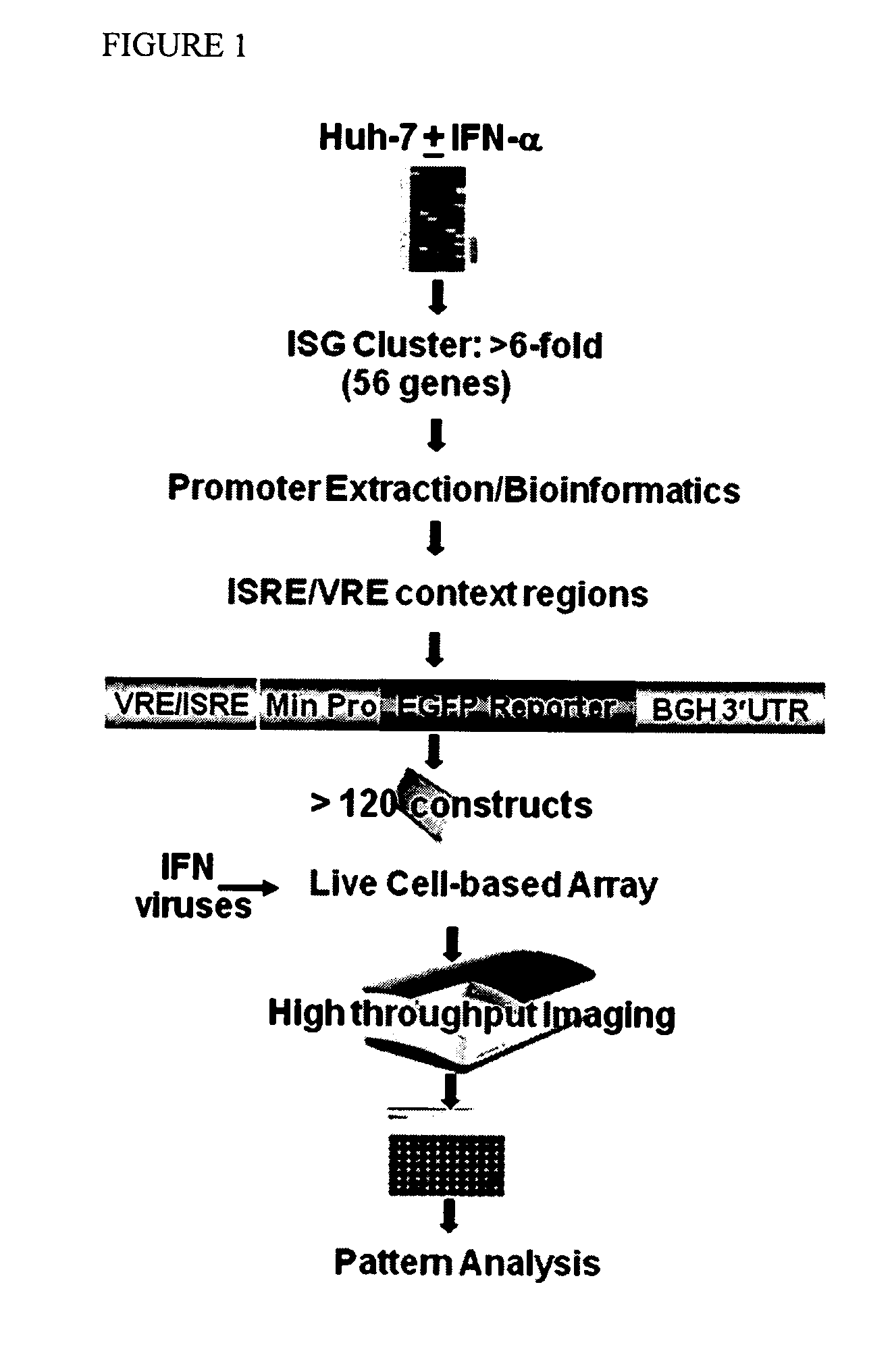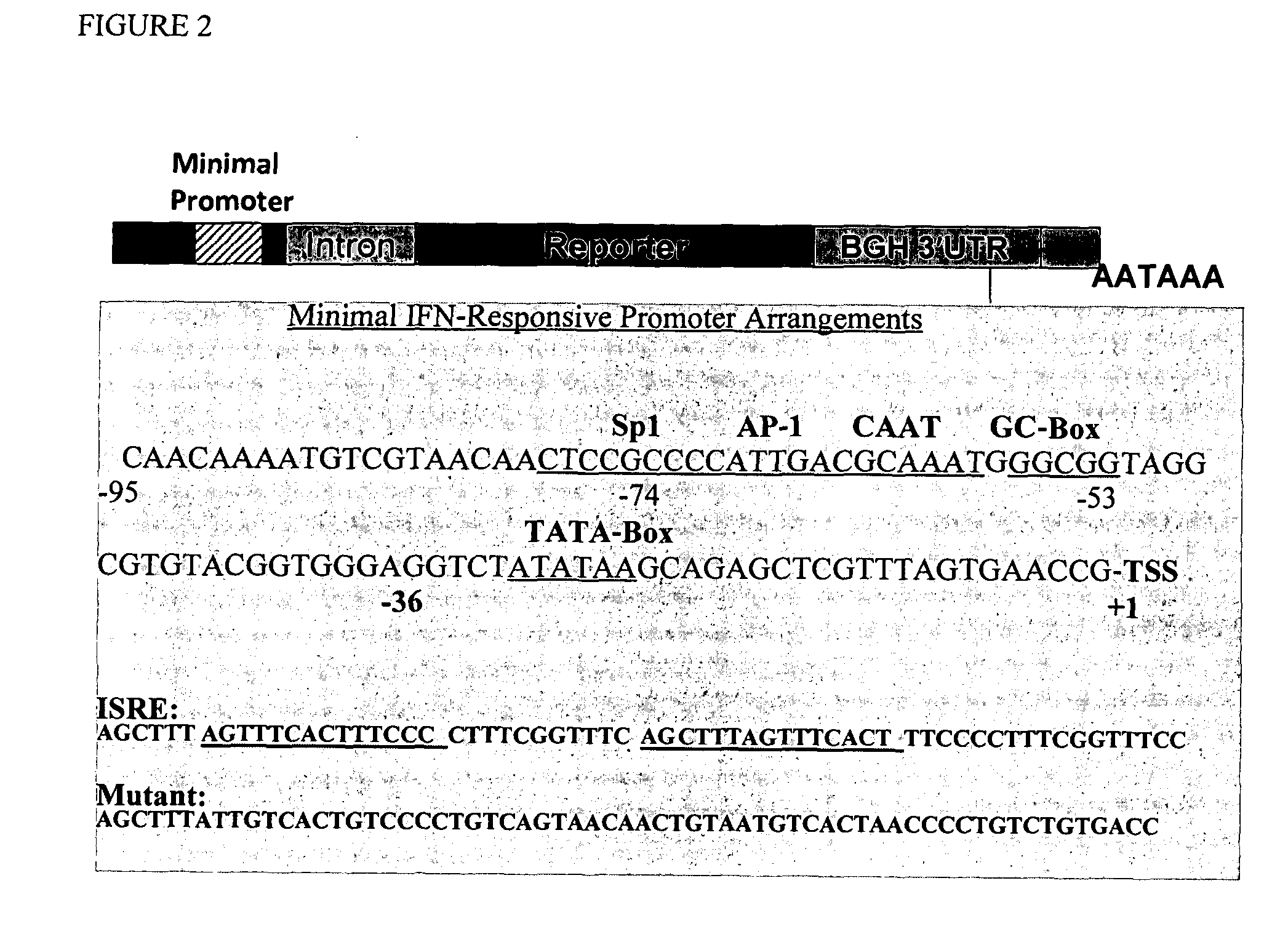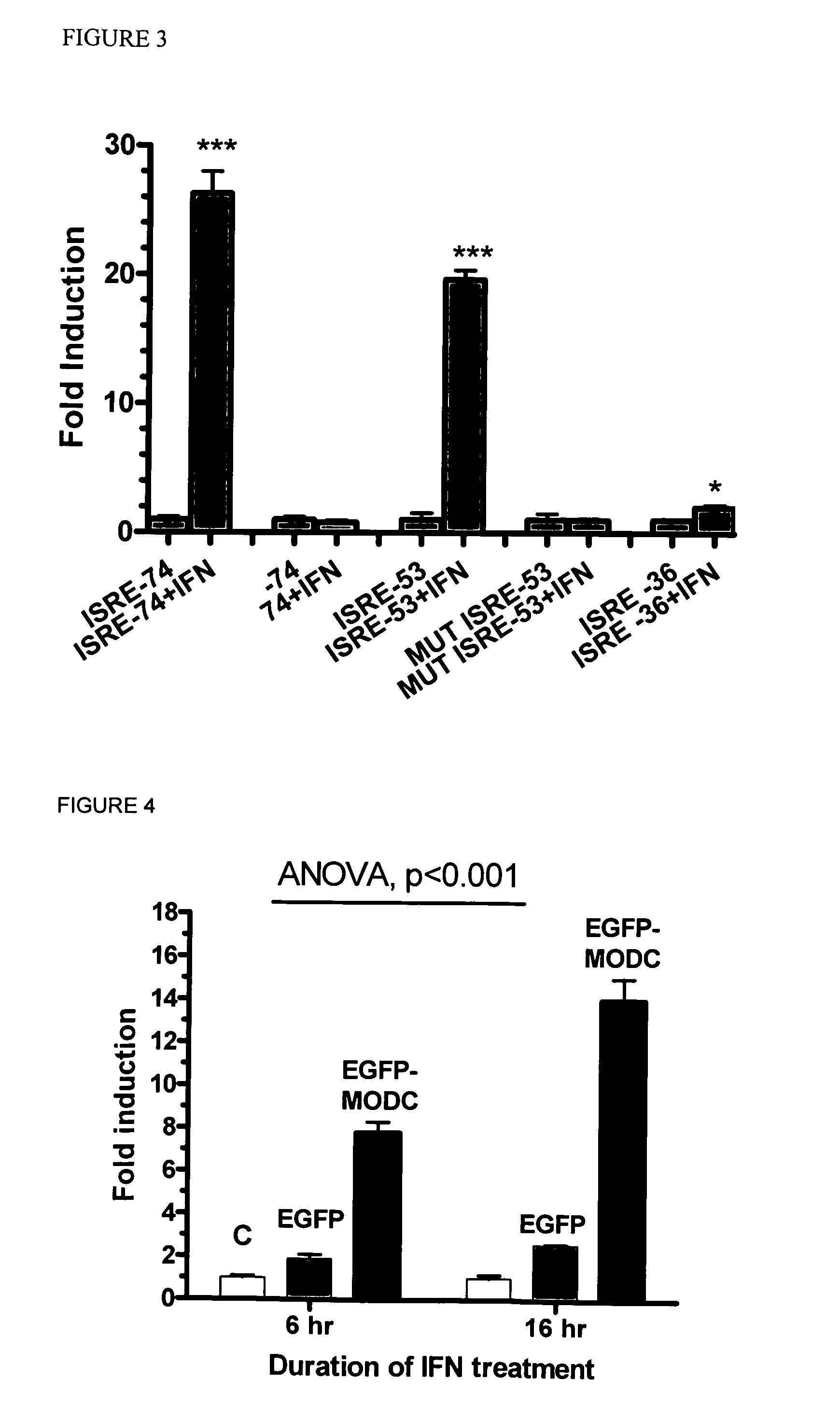Multiple Interferon and Virus Response Element Cell-Based Fluorescence System
- Summary
- Abstract
- Description
- Claims
- Application Information
AI Technical Summary
Benefits of technology
Problems solved by technology
Method used
Image
Examples
example 1
[0088]The following general methods were used in all subsequent Examples.
Cells, IFNs, and Viruses
[0089]Huh-7 cells were maintained in DMEM medium supplemented with 10% heat-unactivated fetal bovine Serum (FBS), 100 U / ml penicillin, 100 pg / ml streptomycin. Recombinant human rIFNa2a (Roferon) is from Hoffman-LaRoche, Basel, Switzerland and had specific activity of 2×108 IU / mg. Recombinant human IFNy is from R & D systems. All viruses were obtained from ATCC and propagated in appropriate host cells. Encephalomyocarditis virus (EMCV), vesicular stomatitis virus (VSV, Indiana strain), Herpes simplex virus (HSV-I), respiratory syncytial virus, and influenza virus human H1N1 A / Puerto Rico / 8 / 34 strain were obtained from the ATCC (Manassas, Va.). Virus preparations were clarified by low speed centrifugation, filtered through 0.22-pm membranes for sterility, and titrated on VERO (African Green Monkey Kidney cell line, ATCC) or by hemagglutinin assay (in case of RSV and flu virus). Virus stock...
example 2
[0096]VRE and ISRE-containing promoters that are responsive to IFN were searched by first profiling gene expression in the Huh7 liver cell line. 59 strongly induced (6 fold) gene cluster (FIG. 1, Table 1) have been selected.
TABLE 1Table 1: Total RNA samples from mock-treated or IFN-α (100 U / ml)-treatedcells were extracted and subjected to microarray-based hybridization. Microarrayexperiments were performed at least twice with two different whole transcriptomeoligonucleotide microarray systems (as described in Example 1).Induction,GeneDescriptionRatio, MeanSEMNARF1ADP-ribosylation factor 15.200.202C10orf118Uncharacterized protein C10orf11810.004.002C3complement component 35.581.932CASP7caspase 7, apoptosis-related cysteine peptidase6.110.802CXCL10chemokine (C-X-C motif) ligand 107.820.483DDX58DEAD (Asp-Glu-Ala-Asp) box polypeptide 5813.004.282EPSTI1epithelial stromal interaction 1 (breast)19.002.002G1P2ISG15 ubiquitin-like modifier16.7212.31 2G1P3interferon, alpha-inducible protein 6...
example 3
[0100]In order to proceed with constructing the virus / IFN responsive constructs the VRE / ISRE response GFP reporter were optimized by assessing several IFN-responsive reporter constructs using a consensus ISRE with different minimal promoters (-36, -53, and -74 from the transcriptional start site following IE CMV promoter) (FIG. 2). The optimal -74 CMV reporter response required the following cis-acting elements: TATA box, GC-Box, CAAT signal, and AP-1 site. Further minimal promoter (-53) contained only the TATA box but it is necessary to extend the length beyond the TATA box with additional 24 nucleotides since -36 region minimal promoter which contains only the TATA box failed to induce IFN response.
[0101]In this example, Huh-7 cells were transfected with the reporter using -74 or -53 minimal promoter fused with standard IFN-responsive elements (as shown in FIG. 2). Additionally, mutant -53 promoter was used (sequence showing in FIG. 2). There was indeed significant responses with ...
PUM
| Property | Measurement | Unit |
|---|---|---|
| Atomic weight | aaaaa | aaaaa |
| Atomic weight | aaaaa | aaaaa |
| Atomic weight | aaaaa | aaaaa |
Abstract
Description
Claims
Application Information
 Login to View More
Login to View More - R&D
- Intellectual Property
- Life Sciences
- Materials
- Tech Scout
- Unparalleled Data Quality
- Higher Quality Content
- 60% Fewer Hallucinations
Browse by: Latest US Patents, China's latest patents, Technical Efficacy Thesaurus, Application Domain, Technology Topic, Popular Technical Reports.
© 2025 PatSnap. All rights reserved.Legal|Privacy policy|Modern Slavery Act Transparency Statement|Sitemap|About US| Contact US: help@patsnap.com



